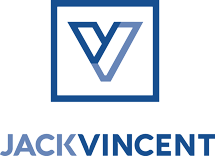With all the hype around Web 2.0 these days, who in the Brave New World would even consider marketing with “old economy” tools?
Me. And highly financed start-ups. And established companies.
“Give me a break, Jack. Even the Goliaths have jumped on the 2.0 bandwagon.”
Of course they have. But that doesn’t discount the merits of doing a few things the old-fashioned… er, the time-tested way.
The Goliaths are still investing time, brainpower and heaps of cash in, what I call, Marketing 1.0. Jack Welch, former CEO of GE, said, “If you don’t have a competitive advantage, don’t compete.” GE makes huge efforts to get its competitive advantage, its USP, its point-of-differentiation, right.
Honing your competitive advantage and preaching it to the converted keeps everyone in the organization focused on providing value to customers, which in the Brave New World is the only way to ensure sustainable profits.
Start-ups and independent consultants may not have heaps to throw at account executives and creative directors, but one thing remains critical. You have to find your mojo.
You can’t make it up on the fly. You can’t change it every week. And you can’t afford to chase customers outside your niche… lest you confuse the marketplace and dilute your sales effort. “He who chases two rabbits catches neither.”
Your competitive advantage should be your weekday religion. That way, when you’re creating an ad, making a cold call, networking, tweeting, blogging, 2.0-ing or 1.0-ing, you’ll stay on message… and you’ll absolutely nail it when someone asks, “Why you?”
“I help company’s sell better.”
That’s my mojo. What’s yours?
Did you hesitate? You can’t permit that on a sales call. You can’t afford to fudge it while you think of an off-the-cuff answer. You need to snap, crackle and pop it. You need Marketing 1.0.
Here are ten steps…
… for honing your competitive advantage and finding your mojo.
- Stare out the window. Some people actually get paid big money for this. Gaze at the horizon. Reflect as you listen to Mozart. (Or Zeppelin.) Spend a day or two thinking, “What is it about my offering that makes me better than the rest?” Or even, “Maybe we’re not the best in the whole, wide world, but around these parts, we’re smokin’ hot… for these reasons!” Don’t be shy. Smile as you tell yourself how damn good you are.
- Brainstorm. Grab an hour and, if you’re alone, grab a clean sheet of paper. If you’re in a small team, roll out a flip chart. The secret to brainstorming is to let it all hang out. Spew. Green fields. Blue skies. Ask yourselves, “What is our competitive advantage?” Then shout out and scribble down everything that comes to your minds. Don’t judge or supress it (yet). Get it down. Bullets. Phrases. Short sentences. Get to the core. Spew, baby, spew!
- Repeat Step 2. But this time, do so like a Rebel With A Cause. Test your outrageous limits. Be the radical element. Get a few far-fetched phrases down there.
- De-compress. Grab a coffee. Do some tasks. Sleep on it. Whatever, but de-compress for a while. Then come back to your messy flip charts. Smile at your work of art.
- Purge. O.K., now you can cross off the silly ones. Not so fast with the outrageous ones that make your gut growl, “Hmm, there’s a strong element of truth in that.” But, yeah, get rid of the ones that are really off-message.
- Clump. With what’s left, categorize them. Move them to a fresh sheet and put them in their respective, categorized columns, perhaps under a headline or an overriding theme.
- Narrow it down. It’s tough, but you’ve got to get rid of some of your categories. What’s critical now is to focus on what provides the most value to clients. Get it down to no more than two categories. One is even better. Avoid generalities. It’s no time to chase rabbits.
- Become a copy-writer. Once again, answer the question, “What makes us so damn good… and valuable?” in a few crispy and crunchy sentences. Only this time, do it in a few, tight sentences.
- Niche thyself. “Try to be all things to all people, and you’ll be nothing to everyone.” This is probably the most difficult part; not only of this particular exercise, but also out in the marketpace. “Why would we not want to tell prospects that we can help them in a handful of areas?” Because they won’t remember a handful! You’ll build a stronger brand and you’ll meet more qualified prospects by focusing. Niche thyself.
- Make it crackle. Now, reduce your three sentences down to one short, simple sentence. Nope, a long, compound sentence doesn’t cut it. Simple does. “We serve the best fajitas in Texas.” “I help companies sell better.”
You may not get it all in the first go. You may actually want to do this over several days. And you may want to re-visit this a month later, before you run out and create expensive marketing materials.
What’s infinitely more important than marketing materials is conversations. Take every opportunity to speak with prospective customers, especially early on. Get market feedback. Then be ready to make tweak your USP.
And therein lies the beauty of fusing Marketing 1.0 with Web 2.0. For a lot of us, it’s ridiculously expensive to print 2,000 brochures and then throw away 1,970 of them because you need to tweak. But it’s easy to change your website, fine-tune your LinkedIn profile and modify your elevator pitch so that they all align with your mojo.
Photo by Manticorp Photography ManticorpPhotography

